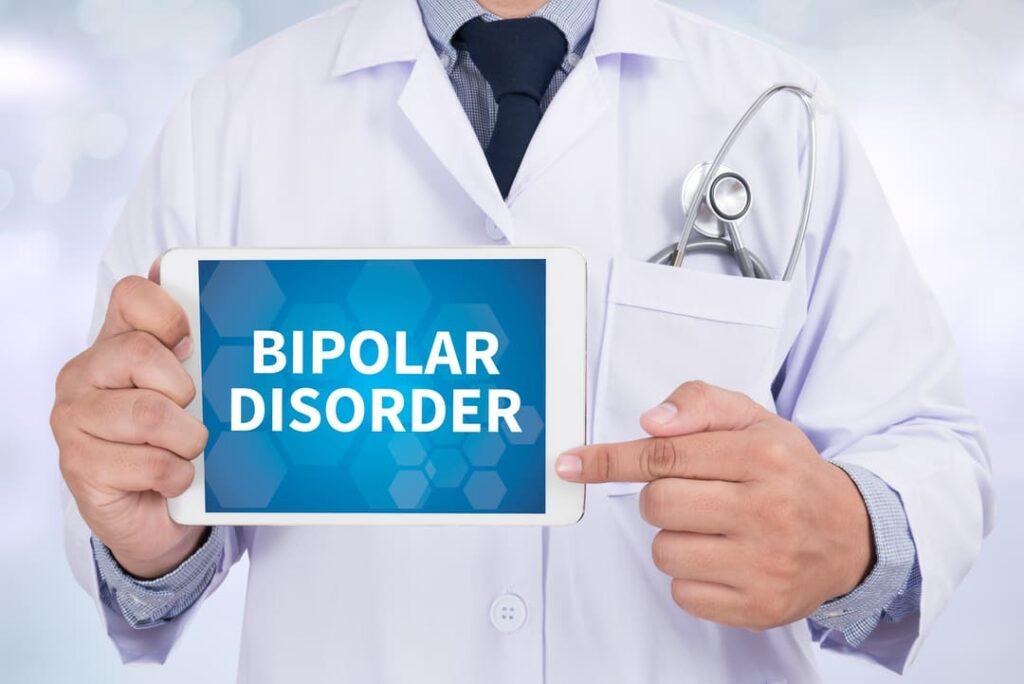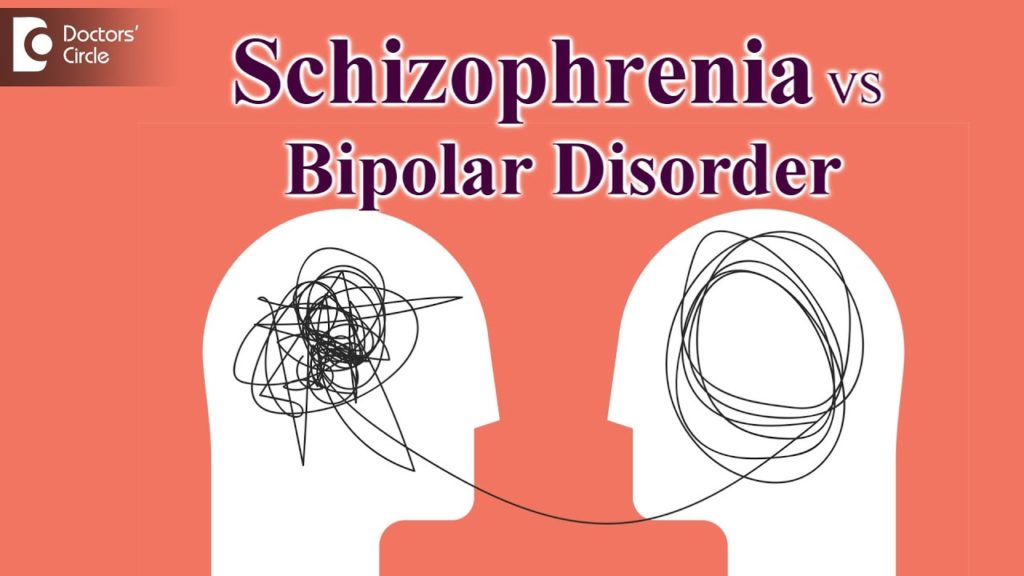
Learn to recognize the early warning signs of bipolar disorder, including manic and depressive episodes. Discover key symptoms, how to approach a diagnosis, and available treatment options.
Understanding Bipolar Disorder: Early Warning Signs You Shouldn’t Ignore provides a comprehensive guide to identifying the key symptoms of bipolar disorder, including manic and depressive episodes.
This article explores the importance of early recognition, the differences between mood swings and bipolar disorder, and how symptoms may present in both adults and children.
It also covers how to approach a loved one if you suspect they may have bipolar disorder and outlines the steps for seeking a professional diagnosis and treatment options.
Early intervention is crucial for effective management, and this guide aims to provide the knowledge needed to take the first step.
Introduction to Understanding Bipolar Disorder and Early Warning Signs
Bipolar disorder is a complex mental health condition that affects millions of people worldwide, often characterized by extreme shifts in mood, energy, and activity levels.
While it can be challenging to differentiate between typical mood swings and the early signs of bipolar disorder, early recognition and intervention are essential for effective management.
Identifying the warning signs can help prevent symptoms from worsening and lead to better treatment outcomes.
In this article, we’ll explore the key early warning signs of bipolar disorder, how to recognize them in yourself or a loved one, and what steps to take if you suspect someone may be affected.
Understanding Bipolar Disorder: Early Warning Signs You Shouldn’t Ignore
Signs of Bipolar Disorder to Look For
Bipolar disorder is a mental health condition that causes dramatic changes in mood, energy, and behavior. These shifts can range from feeling extremely “up” (mania) to feeling very “down” (depression).
While everyone experiences mood swings from time to time, the extreme nature of these mood changes in bipolar disorder can disrupt daily life.
Recognizing the early signs of bipolar disorder is crucial. The sooner it is identified, the sooner treatment can begin, and the better the long-term outcomes will be.
In this post, we’ll dive into the early warning signs of bipolar disorder that you shouldn’t ignore.
What Is Bipolar Disorder?
Bipolar disorder, formerly known as manic depression, is a mental illness marked by significant mood swings. People with bipolar disorder may experience:
- Manic episodes: Periods of high energy, euphoria, or irritability.
- Depressive episodes: Periods of low energy, sadness, or hopelessness.
These episodes can last for days, weeks, or even longer and can greatly impact a person’s ability to function in daily life.
Types of Bipolar Disorder
There are three main types of bipolar disorder:
- Bipolar I Disorder: Characterized by severe manic episodes lasting at least a week, often requiring hospitalization. Depressive episodes typically follow.
- Bipolar II Disorder: Defined by less intense manic episodes (called hypomania) and longer periods of depression.
- Cyclothymic Disorder: Involves fluctuating mood swings, but the highs and lows are less severe than those in Bipolar I or II.
Why Early Recognition Matters
Early detection of bipolar disorder can help manage symptoms before they become overwhelming.
Without treatment, the episodes may worsen, leading to serious emotional and physical consequences, strained relationships, and difficulty maintaining work or school responsibilities.
By understanding the early signs, you can seek professional help and receive a diagnosis, allowing for effective treatment.
Early Warning Signs of Bipolar Disorder
1. Unusual Mood Swings
One of the most noticeable signs of bipolar disorder is the occurrence of extreme mood swings. These shifts are more intense than typical emotional changes and can swing from euphoria and overconfidence to deep sadness and hopelessness.
2. Manic Symptoms
During a manic episode, a person may feel excessively happy, energetic, or irritable. Some key signs of mania include:
- Feeling “on top of the world” or overly optimistic
- Talking rapidly or feeling the need to constantly move
- Making impulsive decisions, such as spending large amounts of money or taking risks
- Decreased need for sleep without feeling tired
- Easily distracted or struggling to focus
3. Depressive Symptoms
The depressive side of bipolar disorder involves feelings of intense sadness, hopelessness, or a lack of interest in previously enjoyed activities. Some common symptoms of depressive episodes include:
- Persistent sadness or crying
- Fatigue or lack of energy
- Feelings of guilt or worthlessness
- Trouble concentrating or remembering things
- Thoughts of death or suicide
4. Irritability or Aggression
Individuals with bipolar disorder may become unusually irritable or short-tempered, especially during manic or hypomanic phases. This irritability can cause tension in relationships or conflicts in the workplace.
5. Changes in Sleep Patterns
Sleep disturbances are common with bipolar disorder. During a manic phase, a person might feel full of energy and need very little sleep. In contrast, during a depressive episode, they might struggle with insomnia or sleep excessively.
6. Poor Judgment and Impulsivity
Bipolar disorder can impair judgment, leading to impulsive behaviors. This could manifest as reckless spending, risky sexual behavior, or making big life decisions without considering the consequences.
Bipolar Disorder in Children and Teens
Recognizing bipolar disorder in children and teens can be more challenging, as their symptoms may overlap with typical developmental behavior. However, some signs to watch for include:
- Extreme mood swings that are out of proportion to the situation
- Difficulty managing anger or frustration
- Rapid shifts from excitement to sadness
- Acting overly silly or hyper for no apparent reason
- Struggling with school performance or friendships
If these behaviors persist and disrupt daily life, it may be a sign of bipolar disorder.
How to Approach a Loved One If You Suspect Bipolar Disorder
If you think a loved one may have bipolar disorder, it’s important to approach the situation with empathy and understanding. Here are some tips on how to talk to them:
- Choose the right time and place: Avoid discussing sensitive topics during an emotional episode. Wait for a calm moment to talk.
- Use “I” statements: Focus on how their behavior affects you rather than blaming or accusing them. For example, “I’ve noticed you seem more stressed than usual, and I’m concerned.”
- Encourage professional help: Suggest seeking advice from a healthcare provider, such as a psychiatrist or therapist, for a thorough assessment.
What to Do After Recognizing the Signs
If you recognize these early warning signs in yourself or someone else, it’s important to seek professional help. A mental health professional can provide a proper diagnosis and discuss treatment options, which may include:
- Medication: Mood stabilizers, antidepressants, and antipsychotic medications can help manage symptoms.
- Therapy: Cognitive-behavioral therapy (CBT) and other forms of counseling can provide coping strategies and emotional support.
- Lifestyle changes: Regular exercise, a healthy diet, and consistent sleep habits can help stabilize mood swings.
Living with Bipolar Disorder: Tips for Managing Symptoms
Living with bipolar disorder can be challenging, but there are ways to manage the condition and lead a fulfilling life. Some helpful strategies include:
- Sticking to a routine: Maintaining a regular schedule for sleeping, eating, and activities can help regulate mood swings.
- Tracking mood changes: Keeping a mood journal can help you and your healthcare provider identify patterns and triggers.
- Building a support system: Surround yourself with supportive friends, family, or a support group to lean on during difficult times.
Bipolar disorder is a lifelong condition, but recognizing the early warning signs can make a significant difference in managing its effects.
By understanding the signs and symptoms, you can seek help early, get a proper diagnosis, and begin treatment to stabilize your mood and improve your quality of life.
If you or someone you know is experiencing signs of bipolar disorder, don’t hesitate to reach out to a healthcare provider for guidance and support.
Early intervention is key to living a stable and healthy life with bipolar disorder.
Tips for Understanding Bipolar Disorder: Early Warning Signs You Shouldn’t Ignore.
Here are some actionable tips for recognizing and addressing the early warning signs of bipolar disorder:
1. Monitor Mood Changes
Pay attention to drastic mood swings that seem extreme or out of proportion to the situation. If your emotional highs and lows feel more intense than usual, it could be a sign of bipolar disorder.
2. Track Your Energy Levels
Notice if you experience periods of unusually high energy, excitement, or irritability followed by phases of extreme fatigue or sadness. Bipolar disorder often causes shifts between these manic and depressive states.
3. Keep a Mood Journal
Recording your daily moods, sleep patterns, and behaviors can help you identify patterns or triggers for manic and depressive episodes. This can also be helpful for discussing symptoms with a healthcare provider.
4. Be Aware of Impulsivity
If you find yourself making rash decisions, spending money irresponsibly, or taking unusual risks, these behaviors could be early signs of a manic episode. Try to recognize these patterns before they escalate.
5. Seek Help Early
If you suspect you or a loved one may be experiencing symptoms of bipolar disorder, consult a mental health professional. Early intervention can prevent symptoms from worsening and lead to better long-term management.
6. Talk to Trusted Friends or Family
If you notice changes in your behavior or emotions, speak with someone close to you. They may be able to provide perspective on how your moods or actions have changed over time.
7. Prioritize Sleep and Routine
Bipolar disorder often disrupts sleep patterns. Try to maintain a consistent sleep schedule and daily routine to help manage mood swings and stabilize your energy levels.
8. Educate Yourself
Learn more about bipolar disorder, including its symptoms, triggers, and treatment options. The more informed you are, the better equipped you’ll be to recognize early signs and seek the appropriate care.
9. Don’t Ignore Irritability
Increased irritability or aggression is a common symptom, especially in manic phases. If you notice these feelings becoming more frequent or intense, it may be time to talk to a professional.
10. Reach Out for Support
Living with bipolar disorder can be overwhelming. Build a support system of friends, family, or support groups that you can turn to when things get difficult. They can offer encouragement and remind you to seek help when necessary.
By following these tips, you can better understand the early warning signs of bipolar disorder and take steps toward managing the condition before it disrupts your daily life.
Conclusion
In conclusion, recognizing the early warning signs of bipolar disorder is essential for timely intervention and effective management. The key symptoms to watch for include:
- extreme mood swings
- manic episodes characterized by elevated energy and impulsive behavior
- depressive episodes marked by persistent sadness and fatigue
- irritability, and changes in sleep patterns.
By understanding these signs, both in adults and children, you can help prevent the condition from worsening and seek professional help before it severely impacts daily life.
Early diagnosis and treatment, whether through medication, therapy, or lifestyle changes, can significantly improve quality of life for those affected by bipolar disorder.
If you notice these warning signs in yourself or a loved one, reaching out to a healthcare professional for guidance is a crucial step toward managing the disorder.
Remember, living with bipolar disorder is manageable with the right support and treatment plan.
For more information on bipolar disorder symptoms, treatment options, and management strategies, explore trusted mental health resources or consult a healthcare provider.
Early recognition can make all the difference in leading a stable and fulfilling life with bipolar disorder.
Resources and Links for Understanding Bipolar Disorder: Early Warning Signs You Shouldn’t Ignore.
Here’s a list of helpful resources for learning more about bipolar disorder and understanding its early warning signs:
1. National Institute of Mental Health (NIMH) – Bipolar Disorder Overview
Provides a comprehensive overview of bipolar disorder, its symptoms, and available treatments.
Visit NIMH Bipolar Disorder
2. Mayo Clinic – Bipolar Disorder Symptoms and Causes
Detailed information on the symptoms, causes, and risk factors of bipolar disorder, along with treatment options.
Visit Mayo Clinic Bipolar Disorder
3. National Alliance on Mental Illness (NAMI) – Bipolar Disorder
A mental health organization offering support and education for those affected by bipolar disorder.
Visit NAMI Bipolar Disorder
4. Depression and Bipolar Support Alliance (DBSA)
Offers peer-led support groups, educational resources, and tools for managing bipolar disorder.
Visit DBSA
5. American Psychological Association (APA) – Bipolar Disorder
Features articles and resources for understanding bipolar disorder and managing mental health challenges.
Visit APA Bipolar Disorder
6. Mental Health America (MHA) – Bipolar Disorder Resources
Provides mental health screenings and resources to help individuals better understand and manage bipolar disorder.
Visit MHA Bipolar Disorder
7. Psychology Today – Find a Therapist for Bipolar Disorder
Use this directory to find therapists, counselors, or psychiatrists who specialize in bipolar disorder treatment.
Find a Therapist
8. International Bipolar Foundation (IBPF)
A non-profit organization that provides education, research, and support for people living with bipolar disorder.
Visit IBPF
9. Healthline – Bipolar Disorder: Symptoms, Types, and Treatment
Offers an in-depth look at the different types of bipolar disorder, their symptoms, and treatment options.
Visit Healthline Bipolar Disorder
10. BetterHelp – Online Therapy for Bipolar Disorder
Online counseling platform where individuals can connect with licensed therapists experienced in treating bipolar disorder.
Visit BetterHelp
These resources can provide valuable information, support, and treatment options for those seeking help for bipolar disorder.
Thank you for reading “Understanding Bipolar Disorder: Early Warning Signs You Shouldn’t Ignore”. Always remember to ask for help.

